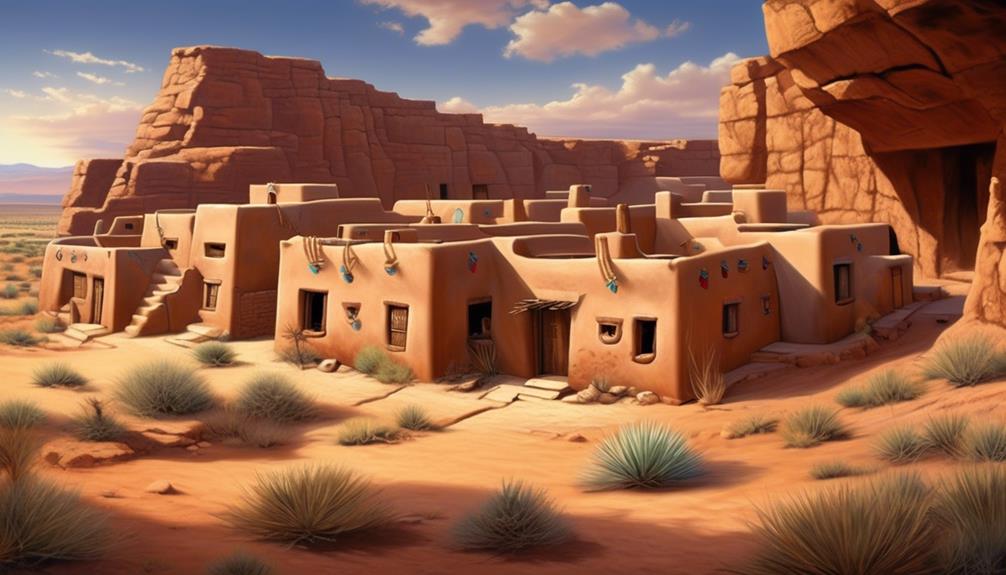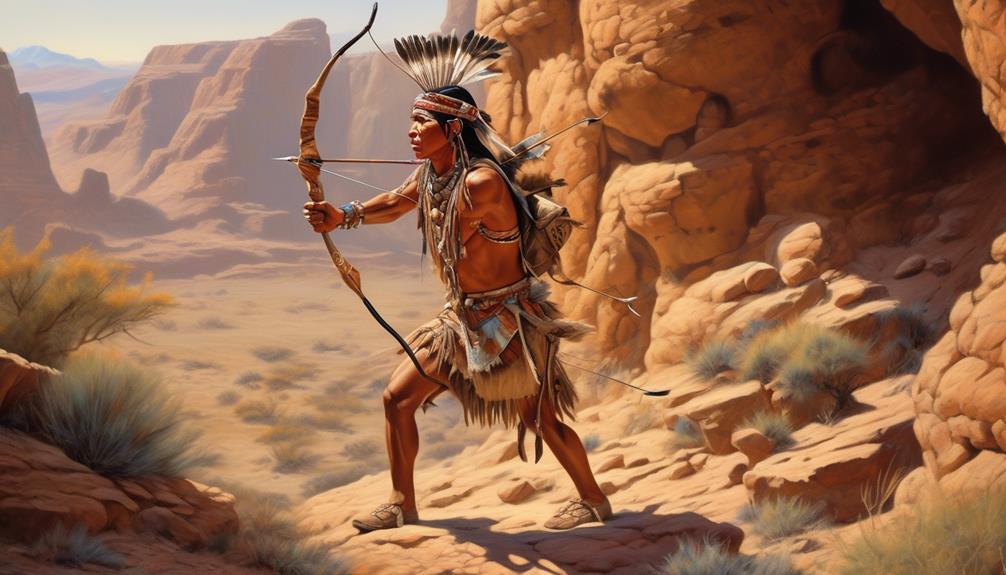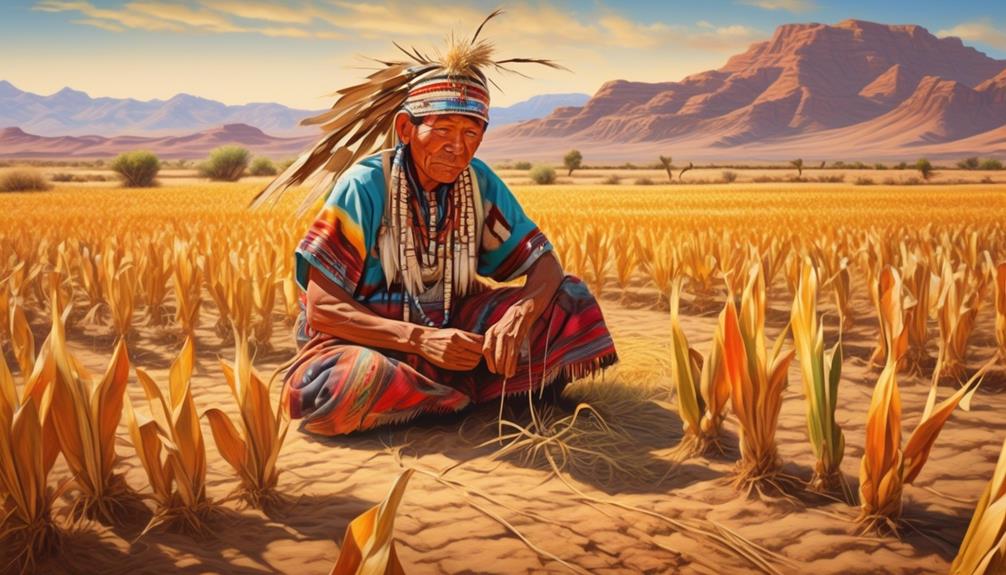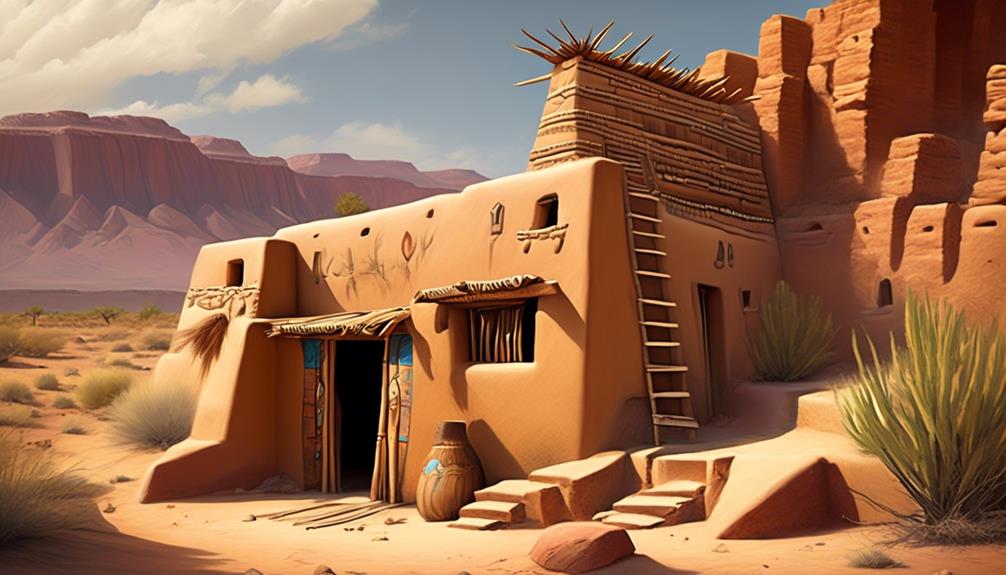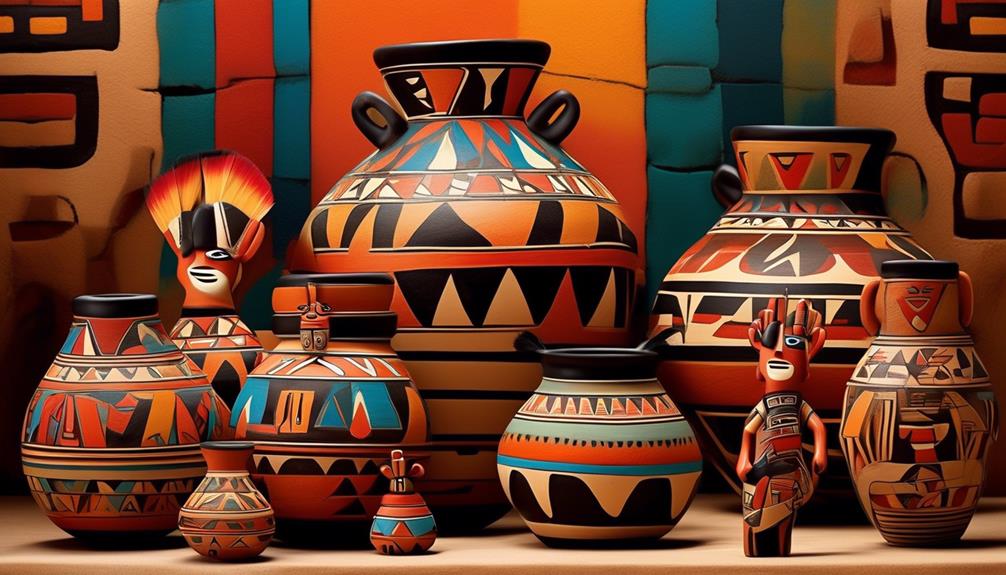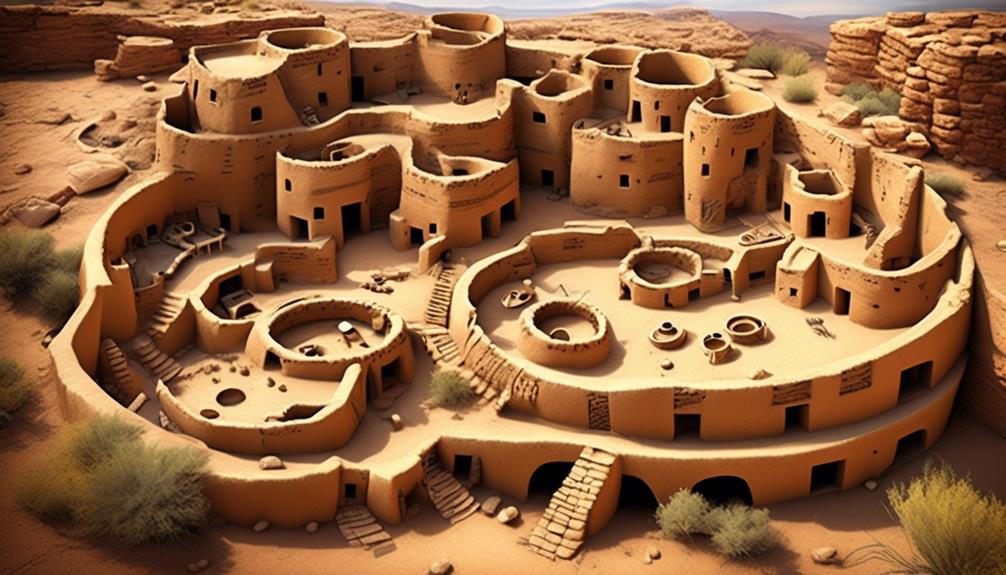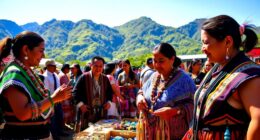As we explore the depths of history, the Hopi tribe shines as a colorful tapestry woven with ancient traditions and enduring wisdom. Hailing from the mesas of northeastern Arizona, the Hopi community has established a deep connection with their land and has preserved their cultural heritage for countless generations.
But what sets the Hopi tribe apart from other indigenous groups, and how has their regional environment shaped their customs and beliefs? Join us as we uncover the answers to these questions and explore the fascinating world of the Hopi tribe, delving into their unique place within the Southwestern landscape and their contemporary influence on the world around them.
Key Takeaways
- The Hopi Tribe has inhabited the Southwest region of the United States, specifically the Four Corners area, for over a thousand years.
- The tribe's oral traditions and archaeological evidence support their migration and settlement in the region, highlighting their long-standing presence.
- Hopi customs and rituals, such as Katsina ceremonies, Powamu ceremony, and Snake Dance, play a significant role in preserving their cultural heritage and fostering a sense of unity among the community.
- Hopi art and pottery reflect their enduring connection to heritage and artistic traditions, with vibrant colors, intricate designs, and cultural symbolism that carry stories of creation and migration.
Ancient Origins of the Hopi Tribe
The ancient origins of the Hopi Tribe can be traced back to a time of rich cultural traditions and enduring spiritual beliefs. Tribal migrations and archaeological evidence suggest that the Hopi people have inhabited the Southwest region of the United States for over a thousand years.
Their ancestors settled in the area known as the Four Corners, where the states of Arizona, New Mexico, Utah, and Colorado meet. The Hopi's oral traditions, passed down through generations, have played a vital role in cultural preservation. These narratives recount the tribe's migration and settlement in the region, providing valuable insights into their way of life, religious practices, and societal structure.
Archaeological evidence supports the Hopi's oral traditions, offering glimpses into their ancient settlements, agricultural practices, and artistic expressions. The tribe's ability to maintain and uphold their cultural heritage over centuries is a testament to their resilience and unwavering commitment to their traditions.
Today, the Hopi Tribe continues to honor and preserve its rich cultural legacy, serving as a living connection to its ancient origins.
Traditional Customs and Practices
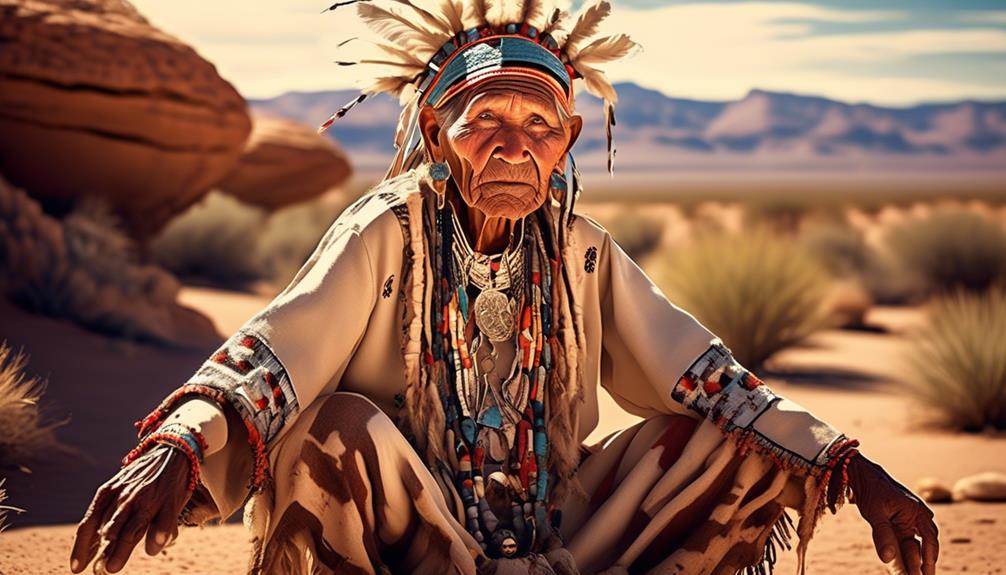
Embedded within the fabric of our daily lives, traditional customs and practices form an intricate tapestry that reflects our cultural identity and values. Our ritual ceremonies are deeply rooted in our history, symbolizing our connection to the land, the spirits, and our ancestors. These ceremonies are conducted with great reverence, often involving intricate dances, songs, and prayers that have been passed down through generations.
Community gatherings play a crucial role in upholding these customs, providing a space for collective participation and shared experiences that strengthen our sense of unity and belonging.
- Ritual Ceremonies
- Katsina ceremonies: These elaborate rituals honor the Katsinam, the spirit messengers who bring blessings to the community.
- Powamu ceremony: Held in late winter, this ceremony marks the beginning of the planting season and is essential for ensuring a bountiful harvest.
- Snake Dance: A highly sacred and awe-inspiring ceremony performed to bring rain and ensure the fertility of the land.
Our traditional practices are a testament to our resilience and our commitment to preserving our cultural heritage. Through these customs, we continue to foster a deep connection with our land and our community, ensuring the continuity of our cherished traditions for generations to come.
Significance of Hopi Art and Pottery
Rooted in our cultural identity and values, Hopi art and pottery hold a profound significance that reflects our enduring connection to our heritage and artistic traditions. The significance of Hopi art and pottery lies in their intricate artistic techniques and rich cultural symbolism. Each piece of Hopi art and pottery is a reflection of our deep spiritual beliefs and the interconnectedness of all aspects of life.
Hopi art, characterized by its vibrant colors and intricate designs, serves as a visual representation of our cultural narratives and traditions. The artistic techniques employed, such as coiling and painting with natural pigments, have been passed down through generations, preserving our heritage and artistic expression.
Furthermore, Hopi pottery is imbued with cultural symbolism, often featuring motifs that represent elements of nature, spiritual entities, and the balance of the universe. The patterns and symbols adorning the pottery carry stories of creation, migration, and the teachings of our ancestors, making each piece a repository of our collective wisdom and identity.
In essence, Hopi art and pottery aren't merely artistic expressions but encapsulate the essence of our cultural heritage, serving as a tangible link to our past and a testament to our enduring traditions and values.
Connection to the Southwestern Landscape
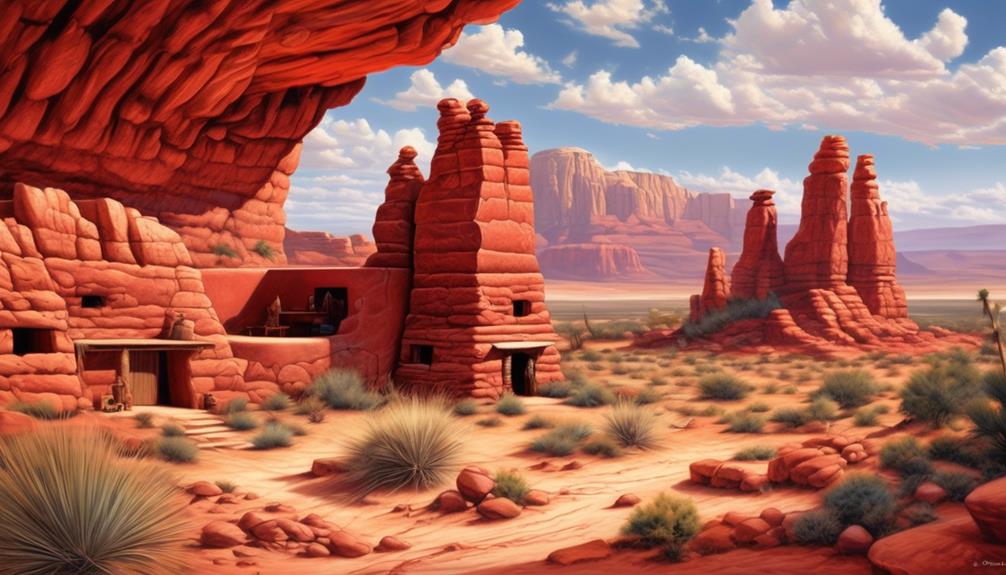
Nestled within the Southwestern landscape, our connection to the land shapes our cultural identity and artistic traditions, infusing our creations with the essence of our environment. Our deep-rooted connection to the Southwestern landscape is a cornerstone of our identity, influencing every aspect of our lives. Here's a glimpse into our profound relationship with the land:
- Sacred Sites: Our ancestral lands are dotted with sacred sites that hold immense spiritual significance for us. These sites serve as a connection to our past and are integral to our cultural practices.
- *Comparative Note*: Unlike many other cultures, our sacred sites aren't just historical landmarks but are living, breathing entities intrinsically tied to our existence.
- Environment-Inspired Art: Our artwork and pottery are intricately linked to the Southwestern landscape. The vibrant colors and intricate patterns in our art are reflective of the natural beauty that surrounds us.
- *Comparative Note*: Our art isn't just an expression of creativity; it's a medium through which we pay homage to the Southwest culture and its natural splendor.
- Harmonious Coexistence: Our connection to the land teaches us the importance of harmonious coexistence with nature. We strive to preserve and protect the Southwestern landscape, drawing on the wisdom of our Native American history to sustain this delicate balance.
Our connection to the Southwestern landscape isn't just geographical; it's deeply ingrained in our cultural ethos, shaping our traditions and guiding our way of life.
Contemporary Presence and Influence
Our contemporary presence within the Southwestern landscape reflects a dynamic interplay of tradition and adaptation, shaping our ongoing influence in the modern world. As the Hopi Tribe, we've embraced the complexities of the 21st century while steadfastly upholding our cultural heritage. Our influence can be seen in various aspects of contemporary society, from art and literature to environmental conservation and indigenous rights advocacy.
The preservation of our cultural practices, such as the intricate art of pottery-making and the performance of age-old ceremonies, serves as a bridge between our rich history and the present day.
In today's world, the Hopi Tribe continues to make significant contributions to the cultural tapestry of the Southwestern region. Our commitment to preserving our language, customs, and spiritual beliefs not only sustains our identity but also fosters a deeper understanding of indigenous traditions among people from diverse backgrounds. This dedication to cultural preservation has reverberated beyond our tribal lands, influencing broader conversations about heritage conservation and the importance of indigenous knowledge in addressing contemporary challenges.
Our contemporary influence is rooted in a deep connection to the past, yet it extends into the future, enriching the world with the enduring legacy of the Hopi people.
Frequently Asked Questions
What Are the Current Political and Economic Challenges Facing the Hopi Tribe?
Currently, political representation and economic development pose significant challenges for the Hopi Tribe. Our community strives for better advocacy and involvement in decision-making processes.
Economic opportunities are sought to improve livelihoods and infrastructure. Cultural preservation and sustainable growth are key considerations. We navigate these hurdles with determination, seeking partnerships and innovative solutions.
The impact of these challenges is profound, shaping our collective efforts for a brighter future.
How Has the Hopi Tribe Adapted to Modern Technology and Globalization?
We've seen a significant impact of globalization on the Hopi Tribe. Technological advancements have brought both challenges and opportunities.
While modern technology has enabled us to connect with the world and preserve our cultural heritage, it has also posed threats to our traditions and land.
The tribe has adapted by embracing certain aspects of modern technology while also maintaining a strong commitment to preserving our cultural identity and values.
What Are Some Common Misconceptions About the Hopi Tribe?
Misconceptions about the Hopi tribe often stem from a lack of understanding of our cultural traditions and religious practices. It's like trying to understand a book without reading the cover.
Our historical context is rich and complex, leading to many misconceptions. Through our traditions, we maintain a deep connection to our land and ancestors.
It's important to recognize and respect our beliefs and practices to truly understand the Hopi tribe.
What Efforts Are Being Made to Preserve the Hopi Language and Traditional Knowledge?
Preservation efforts for the Hopi language and cultural knowledge are crucial. Language preservation is pursued through immersion programs and educational resources.
Engagement strategies include community events and intergenerational knowledge sharing. Traditional knowledge is passed down through oral traditions and hands-on experiences.
These efforts are vital for maintaining our rich cultural heritage and ensuring that future generations can continue to connect with our language and traditions.
How Does the Hopi Tribe Engage With Other Native American Tribes and Organizations for Cultural Preservation and Advocacy?
Engaging in cultural exchange with other tribes is like a beautiful dance, where we share and learn from each other. Our tribe actively participates in intergenerational learning, passing down traditions, stories, and knowledge to our youth, ensuring the preservation of our rich heritage.
Collaborating with other Native American organizations strengthens our advocacy efforts, amplifying our voices for cultural preservation. It's a beautiful tapestry of shared traditions and mutual support.
Conclusion
As we journey through the ancient origins and contemporary presence of the Hopi tribe, we're enveloped in the rich tapestry of their customs and art, like a vibrant desert sunset painted across the sky.
The Hopi's connection to the Southwestern landscape is as deep and enduring as the roots of the ancient saguaro cactus.
Their influence and presence continue to be a beacon of cultural significance in the ever-changing world around them.
Mary is a passionate writer who brings creativity and a fresh perspective to our team. Her words have the power to captivate and inspire, making her an essential contributor to our content. Mary’s commitment to storytelling and dedication to promoting Indigenous culture ensures that her work touches the hearts of our readers. We’re fortunate to have her as part of our team.
